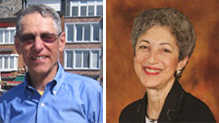
Michael C. Barth, PhD & Phyllis Snyder
Everyone seems to know that Americans live in a rapidly aging society, but it helps to look at the numbers to get a sense of the magnitude of the changes we face. In 2010, 13% of the U.S. population was age 65 or older. The Census Bureau projects that by 2030, this figure will jump to 19.3%, or almost one in five. Of course, as the population ages, so does the labor force. The Bureau of Labor Statistics tells us that in 2010 there were 30 million people aged 55 and older in the labor force; in 2020, this will swell to 41.4 million, or one in four. Now there are about seven million people age 65+ in the workforce. In contrast, over the next decade, as the number of those 65+ grows by 75%, the growth of those aged 25-54 will only be two percent.
In the U.S., we have gotten used to the idea of people going from full-time work to full-time retirement in their mid-sixties. However, we are now in a time when we will be seeing more mature workers continuing to participate in the labor market, whether out of financial need or out of continued ability and preference. This new trend promises greater financial security for older citizens and an opportunity to meet the skill and talent needs of employers.
Many mature workers will need help in navigating a very complex labor market, however. They will need counseling to understand what career pathways would be good for them, and to determine how to use education and training to get the right kind of job for this next stage in their work lives. Unfortunately, workforce development programs and postsecondary institutions currently design their programs for younger demographic groups. Mature workers are hard-pressed to find programs tailored to their needs.
Recognizing this problem, in 2009, the US Department of Labor supported a three-year Aging Worker Initiative (AWI). This initiative funded ten sites to test new models of serving mature workers. As this initiative comes to a close, the Council for Adult and Experiential Learning (CAEL), which provided technical assistance for the project, will invite leading experts on the mature workforce to review what happened at the sites and develop a set of recommendations for policy makers and employers.
The best thinking of these experts will be presented at a conference in Washington, D.C., on May 3: Tapping Mature Talent: Policies for a 21st Century Workforce. http://host.msgapp.com/Extranet/95687/forms.aspx?msgid=ou4zpiptli3vwaeqouftlycb
Here are a few recommendations that will be discussed:
- Provide a basic level of financial literacy to workers to help them make good decisions that will affect their transition into retirement.
- Engage employers and “sell” them on the contributions of mature workers through strategies such as internships, reverse job fairs and targeted outreach.
- Reshape the public workforce system to provide access to high quality, affordable, and labor market driven education and training to help adults of all ages prepare for and remain in the labor market.
We need more creative thinking. What are your ideas? Please post your comments below or join us for the meeting on May 3rd in Washington, D.C.
Author
Michael C. Barth, PhD
Economist and
Independent Consultant
Washington, D.C.
Email: mcb1mcb@gmail.com
Vice President
CAEL
Phone: 215-731-7160
Email: psnyder@cael.org

